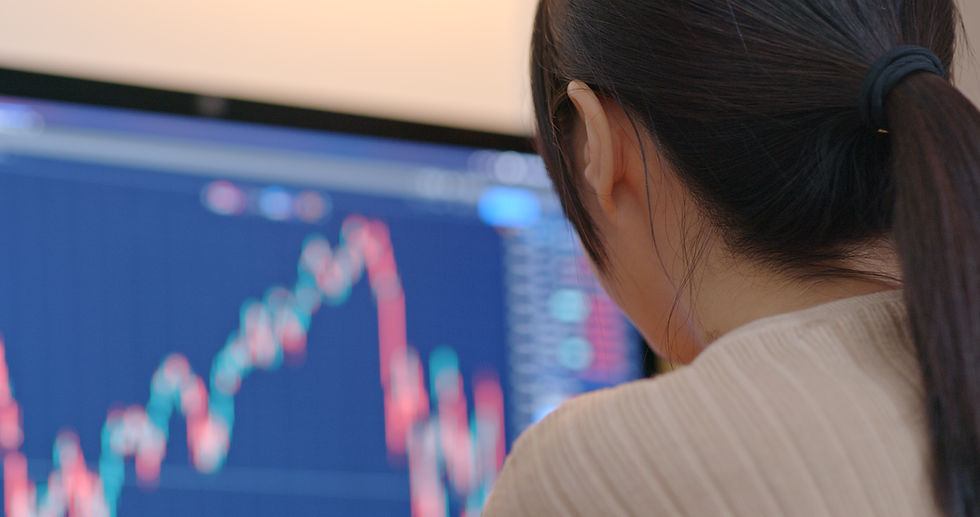Mastering Email Engagement: Understanding, Calculating, and Enhancing Your Click-Through
- Adam Yourist

- Oct 20, 2023
- 3 min read
Updated: Oct 23, 2023

In the vast ocean of digital marketing, email remains a resilient and integral element of any successful marketing strategy. However, amidst the staggering number of emails sent every day, how do you measure the success of your campaigns? More importantly, how can you improve the effectiveness of your outreach? The secret lies in a critical metric: your email's Click-Through Rate (CTR). This comprehensive guide will provide an in-depth understanding of email CTR, illustrating how you can calculate it and offering strategic insights to optimize and boost email click-through. Understanding Email Click-Through Rate (CTR)
Click-Through Rate in the context of email marketing refers to the percentage of email recipients who click on one or more links contained in an email. It’s a direct indicator of how many people on your email list are engaging with your content and genuinely considering the products, services, or information you offer.
Why is CTR Important?
Subscriber Engagement: A high CTR indicates that your email content is relevant and compelling to your subscribers, prompting them to learn more.
Conversion Potential: Clicking through shows an interest. The more clicks, the higher the potential for conversion.
Email Deliverability: ISPs (Internet Service Providers) consider user engagement, like CTR, when determining the deliverability of your emails. A good CTR can improve your reputation and increase the likelihood of your emails reaching the inbox.
Calculating Your Click-Through Rate
CTR is relatively straightforward to calculate. You divide the total number of clicks your email received by the number of emails delivered. Then, multiply the result by 100 to get your percentage.
For instance, if you sent an email to 1000 subscribers and 50 clicked on the link, your CTR would be: (50/1000) * 100 = 5%
It's essential to differentiate between unique clicks and total clicks while considering these calculations. Unique clicks refer to the number of individual subscribers who click on a link, while total clicks include multiple clicks by the same subscriber.
Enhancing Your Click-Through Rate
Now, knowing what CTR is and how to calculate it isn't enough. The goal is to improve this metric, enhancing the effectiveness of your email campaigns. Here’s how you can achieve this:
Segmentation and Personalization
Segment Your List: Not all subscribers are the same. Divide your email list into specific segments based on various criteria like demographics, past purchases, or interaction history. Tailored content for each segment will lead to higher engagement.
Personalize Your Message: Emails that address a recipient by name and include personalized content based on user behavior or preferences can significantly improve CTR. It’s about making your subscribers feel seen and understood.
Compelling Content and Design
Quality Over Quantity: Bombarding your subscribers with emails can lead to fatigue. Focus on sending fewer, high-quality emails that offer value.
Responsive Design: With an increasing number of emails being opened on mobile devices, ensure your email design is responsive and looks good on any screen size.
CTA Placement: Your Call-To-Action (CTA) should be prominent and compelling. It’s advisable to place a CTA early in your email, and if the email is long, repeat it at the end.
A/B Testing
Regular A/B testing can have a significant impact on your CTR. Test different aspects of your emails, including subject lines, content, images, and CTAs, to see what resonates most with your audience. Remember, what works for one segment might not work for another.
Analyzing Email Timing and Frequency
Timing is Everything: The time you send your emails can significantly affect your CTR. Analyze your target audience to determine when they’re most likely to read your email and schedule your sends accordingly.
Frequency Matters: Finding the optimal frequency for email sends can be tricky. It’s about striking a balance; you want to remain on your subscribers’ radar without overwhelming them.
Re-engagement Campaigns
Subscribers lose interest over time. Running re-engagement campaigns can help reignite their interest. These campaigns could offer special deals, ask for feedback, or simply remind subscribers of the value you offer.
Utilizing CTR for Audience Insights
An often-overlooked aspect of CTR is the wealth of insights it can provide into your audience’s preferences and behavior. By closely analyzing which content garners more clicks, you can tailor your future emails to include more of what your audience loves.
Conclusion
Mastering the art of email engagement through understanding, calculating, and boosting your click-through rate is a journey worth every step. By segmenting your audience, personalizing content, maintaining high-quality standards, testing, and timing your emails right, you can witness a remarkable improvement in your CTR. This journey does not end with a few tweaks here and there; it's about consistently evolving with your audience’s preferences, technological advancements, and industry trends. Start implementing these strategies today, and watch your email marketing campaigns reach further and achieve more.



